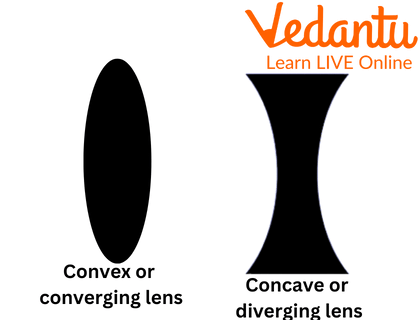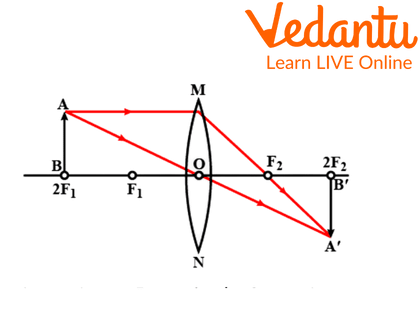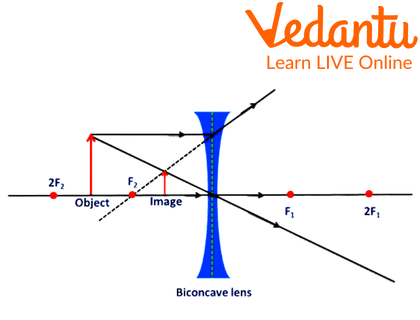




What is a Lens?
A lens is a transparent object made of glass that has one or both sides that are curved. Thus, it is an optical device which has the ability to converge or diverge a beam of light depending on the situation. Simple lenses are made of a single transparent piece, while compound lenses are made up of multiple simple lenses that are aligned along a single axis. In contrast to a prism, which simply refracts light without focusing it, a lens can focus light to create an image. Lens are of basically two types:
Convex Lens: Convex lenses are considered as converging lenses. They are thick in the middle with tapering ends.
Concave Lens: Concave lenses are considered as diverging lenses. They are flat in the middle with broad bases.

Lenses
Magnifying Glasses
Magnifying glasses are basic optical tools used to view objects' details with a small amount of magnification. It is basically made of a convex lens and the lens is fixed inside of a frame with a handle. Magnifying glasses are typically used farther away from the eye, are bigger, and typically have focal lengths of at least 125 mm. As we know it is an emblem of detective fiction, particularly that of Sherlock Holmes. The zoom or search function is frequently represented by a magnifying glass, especially in computer software and websites.

Magnifying Glass
Uses of Converging Lens
It directs all of the light toward a particular object and is used in microscopes, telescopes, and magnifying glasses.
It is utilised in camera lenses because it concentrates light to produce clear images.
It is positioned in front of the eye to sharply bend incoming light, shortening the focal point and ensuring proper illumination of the retina.
It is utilised in optical microscopes, projectors, and binoculars.
It is used in magnifying glasses.
It can be used in the spyhole of doors.
It is used to correct far-sightedness.
Application of Converging Lens
A magnifying glass, farsightedness glasses, cameras, and microscope all use convergent lenses. If an object is at or within the focal length of a magnifying glass, it will produce an image that is upright, magnified, and virtual. Similar to this, eyeglasses are used to correct vision by making sure that light is directed toward the retina rather than away from it.
Solved Questions
1. Define Lens.
Ans: A lens is a transparent object used alone or in combination in an optical instrument to focus light on two opposing regular surfaces, either both of which are curved or one of which is curved and the other is plane.
2. Mention some uses of lenses in everyday life.
Ans: In general, lenses are of varied importance in our day-to-day life for example:
It is used in basic cameras.
It is used in telescopes as an eye lens.
It is used to cure vision problems such as long and short sightedness.
It is used in a microscope to see an enlarged image of the object.
It is also used in magnifying glasses.
3. What kind of image is formed by convex and concave lenses, respectively.
Ans: Concave and convex lenses can produce virtual and real images depending upon the condition. Some of the examples are as follows:
The real image of an object is created at the other centre of curvature when it is at the centre of curvature. In comparison to the object, the image is the same size.

Formation by Convex Lens
When the object is between infinity and the optical centre of the concave lenses, it leads to the formation of a diminished, virtual, and erect image.

Image Formation by Concave Lens
Summary
A lens is a piece of transparent, thick glass that has two spherical surfaces enclosing it. It is an optical apparatus where light rays converge or diverge prior to transmission. There are basically two types of lenses that are convex and concave and they lead to the formation of both virtual and real images. A magnifying glass is an optical device made of convex lenses.
FAQs on Uses of Converging Lenses
1. What type of lens is used to treat myopia?
A concave diverging lens is used to treat myopia. It is a condition that affects many people, causing near objects to appear clear but far away objects to appear blurry. It happens when light rays incorrectly bend (refract) due to the shape of the eye or specific parts of the eye.
2. What is the ideal age to start wearing lenses?
Between the ages of 11 and 14, on average, many eye care professionals start to promote the use of contact lenses. It's a good idea to let kids try contacts even though not everyone enjoys wearing them.
3. Which lens do human eyes use?
The type of lens found in the human eye, called a biconvex lens, is what creates actual images. It activates the retina by concentrating light rays there.









